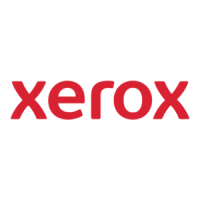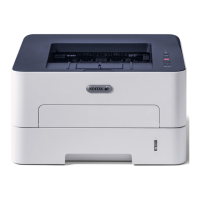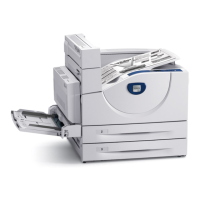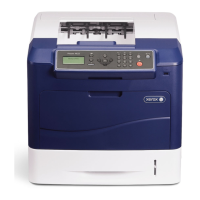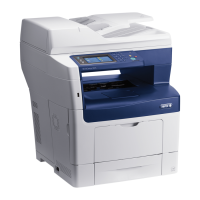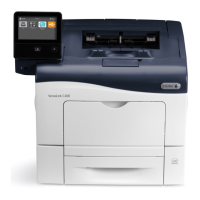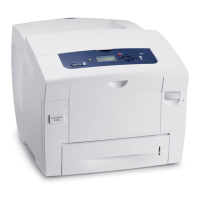What the WSCO Cannot Modify (see next section for possible solutions)
•
The WSCO cannot modify and print an IPDS formatted file.
•
It cannot process vector graphics or GOCA (Graphic Object Content Architecture – IBM’s vector graphic
format)
Printing AFP Documents
The AS/400 has the ability to format a file for printing on an IPDS or an ASCII printer. The AS/400 writer looks at
the Device Type in the “Device Description” file to determine which formatter to call. If the Device Type is *IPDS
and AFP=*YES, then the writer hands the spool file to PSF. PSF queries the printer for print capabilities and
spools the file to an IPDS printer. If the Device Type is 3812 and Host Print Transform (HPT)=*YES, then the
writer hands the Spool file off to HPT. The HPT then looks at the WSCO for printer capabilities and spools the file
to an ASCII printer.
Xerox devices do not support the IPDS format and require that the DEVICE TYPE in the “Printer File” be set to
*AFPDS. No changes to the application are required. The one item that the HPT cannot process is vector
graphics or GOCA (Graphic Object Content Architecture – IBM’s vector graphic format) resources. GOCA is
generated by using the CHRSIZE DDS keyword. For the same results, use the FONT keyword and select a
scalable GFID (Global Font ID).
The Xerox supplied WSCO has pre-mapped the common AS400 fonts to standard PCL printer fonts. Fonts are
easily added or changed in the WSCO if the application requires something different. Font support is documented
in the AS/400 Version 5.1 Printer Device Programming Manual. You can select fonts in an AFPDS spool file by the
DDS keyword FONT, or by using the default GFIDs indicated by the character per inch (CPI) value in the printer
file. The FONT keyword also supports a *POINTSIZE parameter.
HPT does not require the presence of PSF on the AS/400. HPT and PSF can coexist at the same time, and drive
the same printer. PSF provides its own writer, and HPT works through standard AS/400 writers.
PSF and HPT control the location of resources, such as fonts and overlays, in different ways. PSF uses a
PSFCFG object to identify the library list. HPT does not have access to the PSFCFG. It requires all libraries that
contain resources to be in the library list of the job or user who is printing the spool file.
Installing the WSCO
Downloading the Zip File
The XTOOLSxxxx.zip file contains an AS/400 save file and this installation document. The save file contains the
library XTOOLSxxxx. The library and all of the contents are owned by user XRXUSR. Create a user profile called
XRXUSR. To execute the XTOOLSxxxx commands, a user must have the same level of authority required to
execute the IBM command CRTDEVPRT. You don’t need to login as XRXUSR, but the profile must exist.
1. Use a Web browser in the Windows environment to access www.xerox.com.
2. Select Support > Support & Drivers.
3. In the Search by Product box, type in the printer model. Once it appears in the drop-down menu, select
the correct printer model.
4. Select Drivers & Downloads.
5. In the Operating System box, select IBM AS/400.
6. Select AS/400 Workstation Customization Object for Xerox Products.
7. Follow the instructions to download XTOOLSxxxx.zip, and then unzip it using an application such as WinZip.
NOTE: The XTOOLSxxxx library contains WSCOs for all supported Xerox products. It only needs to be
downloaded once.
